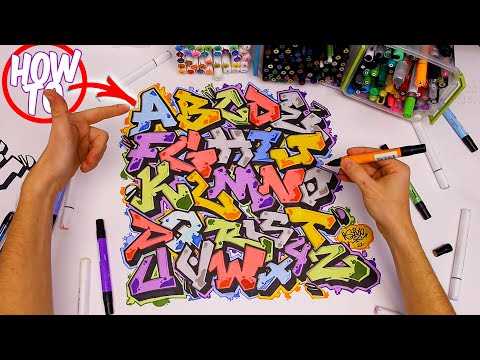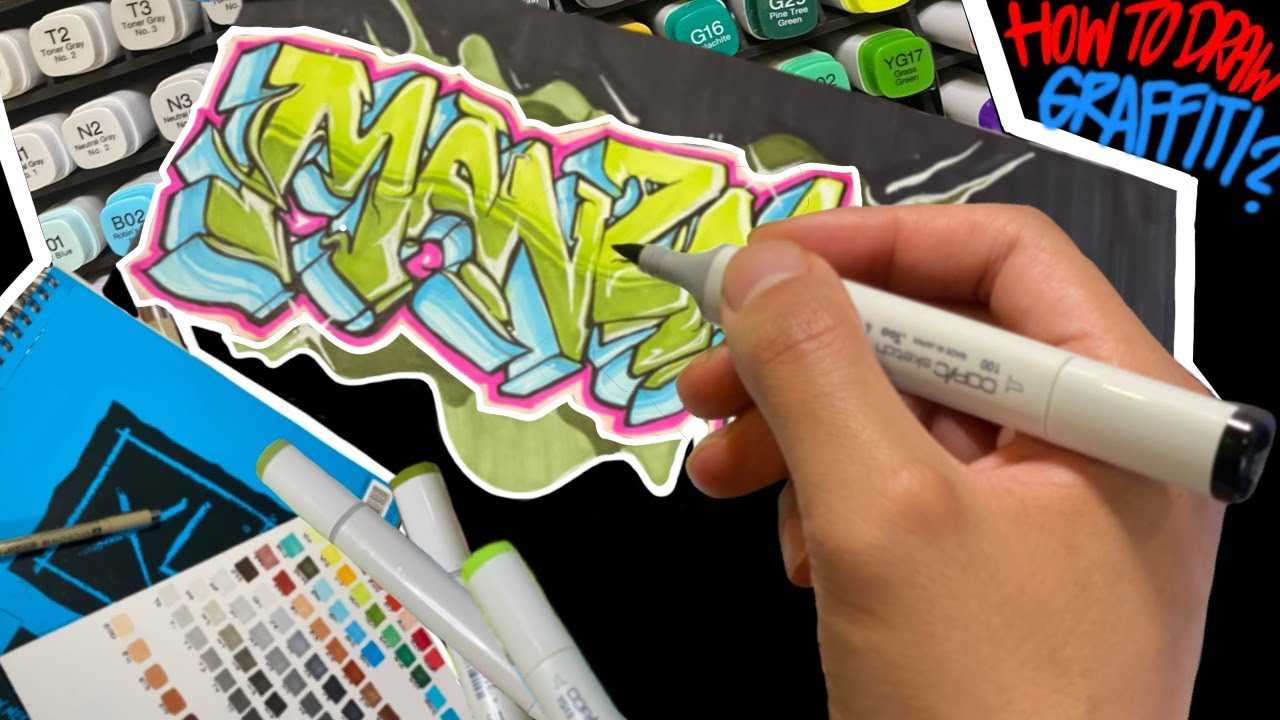
Street art has become an integral part of urban culture, bringing vibrant colors and thought-provoking images to the streets. While many street artists create their masterpieces directly on city walls, it is also possible to capture the essence of street art on paper. By following a few simple steps, you can learn how to create street art on paper and unleash your creativity.
Next, think about the theme or concept you want to explore in your street art. Street art often reflects social messages, emotions, or cultural references. You can choose to address a specific issue that resonates with you or simply let your imagination run wild. The key is to create a narrative or visual story that will engage and intrigue the viewer.
Creating street art on paper requires a few key materials to bring your vision to life. Here are the supplies you’ll need:
1. Paper

Choose a sturdy paper that can handle different mediums like markers, spray paint, and acrylic paint. Look for heavyweight drawing paper or mixed media paper for durability.
2. Pencils and Erasers
Start with a good set of pencils in different hardness levels. This will allow you to create varying lines and shading. Don’t forget to have a quality eraser on hand for cleaning up mistakes.
3. Markers

Invest in a set of high-quality markers with a range of colors. Look for markers that are fade-resistant and blendable for creating vibrant, eye-catching artwork.
4. Spray Paint

Spray paint adds a unique texture and depth to your street art. Use it to create bold backgrounds or add intricate details to your piece. Choose different colors to create contrast and make your artwork pop.
5. Acrylic Paint

Acrylic paint is a versatile medium that can be used for a variety of techniques. It dries quickly, allowing you to build up layers of color and add details to your artwork. Experiment with different brushes and techniques to achieve the desired effect.
6. Brushes

Invest in a variety of brushes with different shapes and sizes. Flat brushes are great for large areas, while round brushes are perfect for adding fine details. Experiment with different brush strokes to create different textures and effects.
7. Stencils

If you’re new to street art or want to add intricate designs, stencils can be a helpful tool. They allow you to create precise shapes and patterns without having to rely solely on your drawing skills. Look for stencils in different sizes and designs to expand your options.
With these materials in hand, you’ll have everything you need to start creating street art on paper. Don’t be afraid to experiment, try new techniques, and let your creativity shine!
INSPIRATION

1. Urban landscapes: Take a walk around your city or town and observe the unique architectural features, street signs, and graffiti. These elements can be incorporated into your artwork.
2. Other street artists: Explore the work of famous street artists like Banksy, Shepard Fairey, and Swoon. Study their techniques and styles to develop your own unique approach.
3. Nature: Look to nature for inspiration. The patterns, colors, and textures found in leaves, flowers, and landscapes can all be translated into your artwork.
4. Cultural references: Draw inspiration from your own culture or other cultures. Research historical street art movements, traditional art styles, and symbols that represent your heritage.
5. Everyday objects: Take a closer look at the objects around you. Simple things like a bicycle, a fire hydrant, or a street lamp can be transformed into interesting subjects for your artwork.
Remember, inspiration can come from anywhere, so keep an open mind and let your creativity flow!
TECHNIQUES
Creating street art on paper requires different techniques and materials compared to creating art directly on walls or other surfaces. Here are some popular techniques to consider:
Stencil Art

Stencil art is a common technique used in street art. To create stencil art on paper, you will need a stencil design and some spray paint or acrylic paint. Place the stencil on your paper and secure it with tape. Then, apply the paint over the stencil using a brush or spray can. Lift the stencil carefully to reveal your stencil art.
Collage

Collage is another popular technique in street art. Gather various materials like magazine cutouts, newspaper clippings, stickers, and colored paper. Arrange and glue these materials onto your paper to create a visually interesting composition. Collage allows for endless creativity and experimentation.
Marker Art

Using markers is a versatile and precise technique for creating street art on paper. Invest in high-quality markers with a wide range of colors. Use different stroke techniques, such as cross-hatching and layering, to add depth and dimension to your artwork. Experiment with different marker sizes and tip shapes for varied effects.
Decoupage
Decoupage involves cutting out images or patterns from paper and gluing them onto your surface. To do this, gather images from magazines or print your own designs. Apply glue to the back of the image and press it onto your paper. Smooth out any wrinkles or air bubbles for a clean look. Decoupage allows you to create intricate and detailed street art on paper.
These are just a few techniques to get you started. Don’t be afraid to explore, mix and match, and develop your own unique style of street art on paper.
TIPS AND TRICKS

Creating street art on paper can be a fun and creative way to express yourself. Here are some tips and tricks to help you get started:
1. Choose the right paper: Look for a paper that is thick and durable, such as watercolor paper or Bristol board. This will prevent the ink or paint from bleeding through and ruining your artwork.
2. Use high-quality materials: Invest in good quality markers, pens, or paints to achieve vibrant and long-lasting colors. Cheap materials can result in dull and faded artwork.
3. Plan your design: Before you start drawing or painting, sketch out your design on a separate piece of paper. This will help you plan the composition and make adjustments before committing to your final artwork.
4. Experiment with different techniques: Street art is all about exploring and pushing boundaries. Try using different textures, layering techniques, or incorporating stencils to add depth and visual interest to your artwork.
5. Practice your lettering: If you’re adding text to your street art, take the time to practice your lettering styles. Experiment with different fonts, sizes, and styles to make your text stand out.
6. Don’t be afraid to make mistakes: Street art is often spontaneous and imperfect. Embrace mistakes and incorporate them into your artwork. Sometimes, the most interesting pieces come from unexpected accidents.
7. Protect your artwork: Once you’ve finished your street art on paper, make sure to protect it by using a fixative spray or laminating it. This will help preserve and protect your artwork from smudging or fading over time.
Remember, street art is a form of self-expression, so have fun and let your creativity flow!
SHOWCASING YOUR ARTWORK
Once you have finished creating your street art masterpiece on paper, it’s time to showcase it to the world. Here are some ways you can display and share your artwork:
- Frame it: One of the most traditional and effective ways to showcase your artwork is by framing it. Choose a frame that complements your artwork and hang it on a wall for everyone to see.
- Create an online portfolio: In this digital age, having an online portfolio is essential for any artist. Build a website or use a platform like Instagram or Behance to share your street art with a wider audience.
- Participate in art exhibitions: Look for local art galleries or events that allow street artists to showcase their work. Participating in art exhibitions is a great way to gain exposure and connect with other artists and potential buyers.
- Organize a street art event: If you want to take a more proactive approach, consider organizing a street art event in your community. Find a public space where artists can create their art live and invite people to come and admire the artwork.
- Collaborate with other artists: Collaborating with other artists can provide opportunities for your artwork to be seen by a larger audience. Find artists whose style complements yours and create a joint artwork together.
- Share on social media: Social media platforms like Facebook, Twitter, and TikTok can be powerful tools for sharing your artwork. Use relevant hashtags and engage with your audience to attract attention to your street art.
Remember, showcasing your artwork is not just about displaying it but also about sharing your passion and talent with others. Be proud of your creations and never be afraid to put them out into the world!

I am a mural enthusiast and a fervent admirer of street art. Rather than creating murals myself, I am passionate about collecting them. My love for street art knows no bounds. I am dedicated to curating and cherishing these artworks that grace the streets. My collection stands as a testament to my profound appreciation for this form of artistic expression.
read about me



